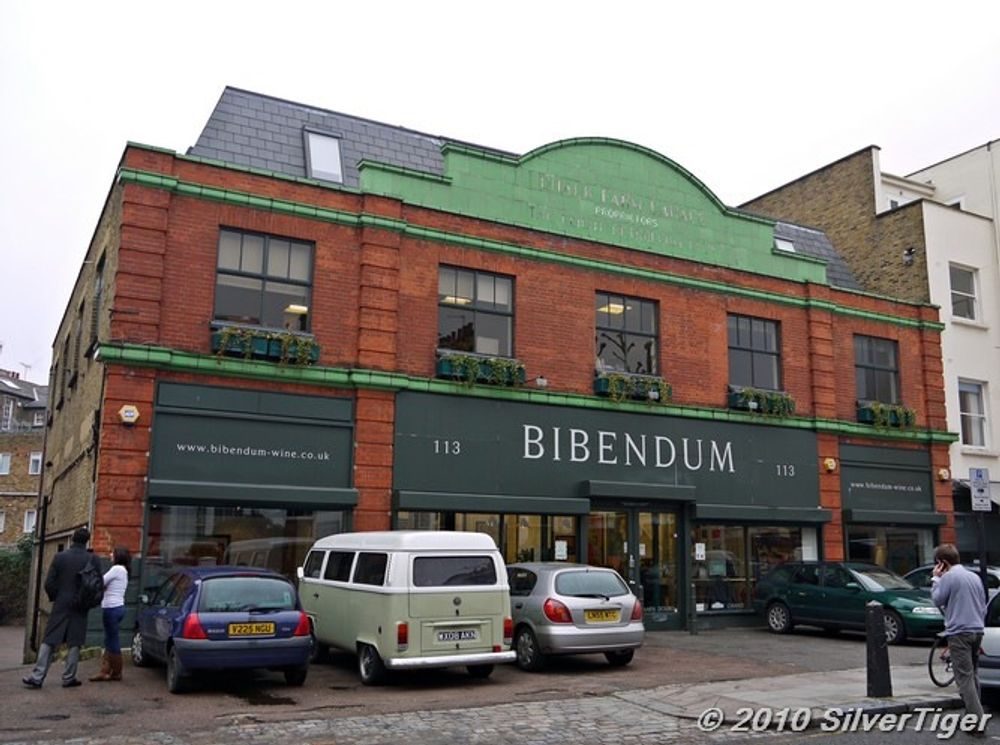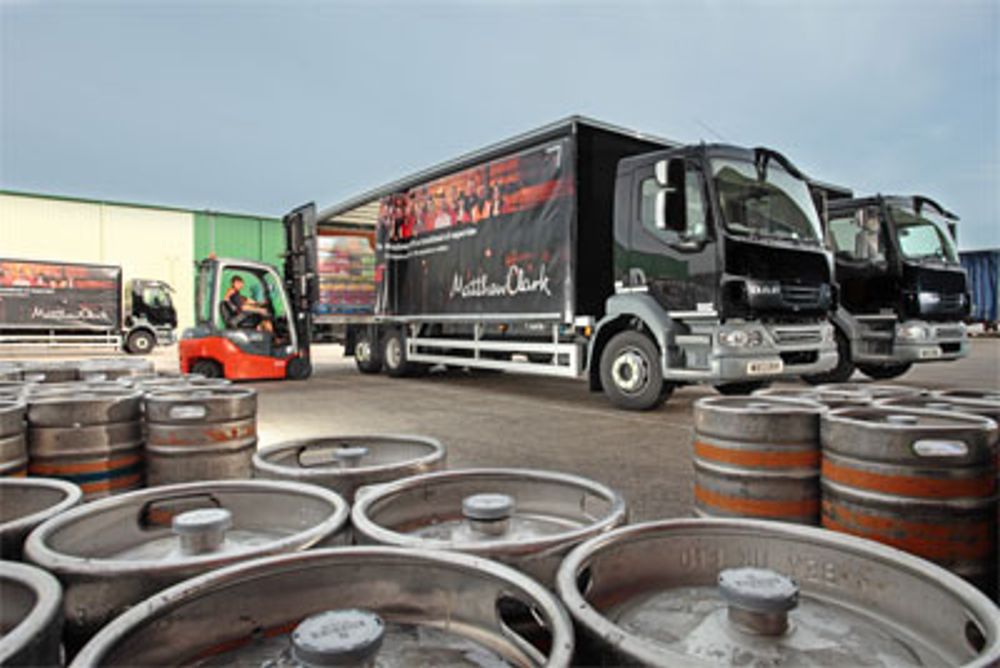In less than a year since Conviviality PLC brought Bibendum PLB into the business, it believes it has the trading strategy in place to keep its customers, suppliers, and producers happy.
There must be times working in very high profile roles of an industry’s biggest company that you are in the corporate version of the Truman Show. Every move you make, every decision you take is reported, analysed, chewed over and judgements made. What’s worse is you probably don’t get to hear 10% of the comments being made about you by your competition, never mind your customers that are supposed to be nice about you.
Or perhaps that’s just as well for your state of mind.
Now the drinks industry’s biggest distribution and supply business is without doubt Conviviality PLC. A company that many in the trade did not even know existed three to four years ago as it simply traded under its then two corporate names Bargain Booze and Wine Rack.
If you were a Conviviality employee in those days there was little if no public scrutiny about what you did or said, other than those directly involved in the company and your shareholders wondering if the share price was ever going to get much above 150p and whether its public listing in 2013 was really worth it.
But that was before Conviviality started playing its cards and showing its muscle. Fast forward through those next three to four years and things are very different. Conviviality now has a significant share of distribution in to mainstream and premium on-trade with its shock purchases of first Matthew Clark in autumn 2015 and then, last May, the double whammy of bringing Bibendum PLB on board and cementing its strong position in the off-trade too.
Its average shareholder is now sitting on an investment that has nearly doubled in value hitting its peak earlier this month at 275p.
But it is one thing splashing the cash, it is another doing it wisely and making it stick and the trade as a whole has been waiting on the sidelines to see just how Conviviality would bring all its moving parts together.
The real picture will come out when its 2016/2017 results are published in due course, but the fact its share price has jumped from 215p on December 30 to 275p this month suggests the City appears happy with what is going on behind the scenes. Buoyed by first half results that showed a 210% rise in revenues to £782.5m and a 4.4% increase in like-for-like sales in the six months to the end of October. Which all came together to generate a handy £7.4m pre-tax profit for Conviviality, a whole lot better than a £4m loss a year ago.
Three in to one

Andrew Shaw, group wine buying director
You would struggle to fault Conviviality’s strategy of dividing its spoils, as it were, into key trading areas – direct, retail and trading – with relevant businesses and leaders operating within them.
Direct includes Matthew Clark and Bibendum; Retail includes Bargain Booze and Wine Rack, covering 716 stores and more than 370 franchisees; Trading covers PLB servicing off-trade retailers, Walker & Wodehouse directed at independent wine merchants, its specialist brand agency businesses, as well as its outdoor and events specialists and a brand activation agency.
But that doesn’t tell the full story, at least when it comes to its wine buying.
Andrew Shaw is the group wine buying director, under which it runs two wine buying teams keeping retail and trading/direct separate. Simon Jerrome, previously head of wine buying at Matthew Clark, heads up the buying teams for the trading and direct parts of the business.
The new approach has transformed the way that Conviviality as a whole can now talk to its major wineries, and in particular, its branded suppliers, says Shaw.
It is, in turn, giving some of the world’s biggest wine players a very different company to work with that can be equally happy working with a major supermarket chain, a regional wholesaler, an independent merchant, a casual dining chain through to a Michelin star restaurant.
A brand can now work with Conviviality, says Shaw, and look at all its moving parts as a chess board and decide which is the right strategy for its pieces.
Open for business

Picture by Silver Tiger
It means the process has to be a lot more transparent, a lot more open about the company’s overall objectives so that it can work out how an individual wine producer can best benefit and work with them.
The challenge for Shaw and his teams has been getting the framework right, working on revising the ranges between Matthew Clark and Bibendum and making sure it is commercially effective for both its customers and producers.
“I am really pleased with how the first nine months has gone,” says Shaw, particularly as it achieved its goal of having the new ranges locked down by beginning of March.
Shaw says the challenge to get it right is acute for both the suppliers and Conviviality, particularly with the backdrop of the collapse in sterling over the last year. “I can’t remember anything like this in the wine trade before,” says Shaw. And it is up to everyone in the trade to be on top of their game to get through it.
New strategy

Forget the wine, forget the strategy, let’s just have a dance: the resident band at the Matthew Clark tasting
The new Conviviality strategy was first presented to the trade at the recent Matthew Clark tastings.
“It’s working well,” says Jerrome. “We have been able to here show what the new buying structure is able to do,” he says.
Jerrome works with a team of five wine buyers, including a recently appointed new fine wine buyer which he believes is an opportunity to really offer something special to the trade.
He says it has taken some time getting used not to just for himself but for the previous Matthew Clark and Bibendum teams.
As a former Matthew Clark man himself of many years he admits there is still the perception issue about its overall wine credentials, but this new way of buying will help put it on another level.
“We are working on it all the time. We continue to win lots of awards for our wines and we want to keep that going.”
At your service

Getting to the restaurant in time…
Part of that offer also comes down to service levels, not only in terms of how well equipped Matthew Clark and Bibendum are at getting their wines to customers (you would like to think pretty darn good), but also the quality and depth of the after service it can offer customers.
The key, argues Jerrome, is to get as close as they can to staff on the front line. “We need to make them feel part of the wine in their business. So that they are not afraid to sell wine and that they have enough knowledge to enthuse and engage with their customers,” says Jerrome.
Whilst also appreciating what a transient market the hospitality sector is and the fact there is such a high churn of skilled, trained staff.
But it is up to the wine trade to reach the standards that the beer and spirits categories have set. “When you order a beer it comes in a branded, specific glass. It is all about the perfect serve now both in beer and spirits and we need to bring that more in to wine,” he adds.
“We need to make the perfect serve in wine something for restaurants and the casual dining sector to get behind.”
It is also about the theatre of serving in a restaurant or casual dining environment and making sure you make the most of that.
Bottling together
One of the clear advantages of its new strategy is that it potentially offer much bigger volumes to its wine producers who can make decisions about working in different channels of the Conviviality group.
For Shaw bottled in market wines is now the right route to market for so many wines at certain price and value levels in to the on-trade. “Bottled in market wines allows us to make much more control of our own supply chain and manage it most efficiently.”
“It just gives you such great flexibility,” he says.
Bottling in the UK makes more and more sense, stresses Jerrome, particularly with the adverse currency rate and need to keep costs to a minimum.
As for key areas for growth in the coming months then Jerrome is happy to pick out Sauvignon Blanc, both from Chile and South Africa. Both of which, he says, are proving to be great food driven wines. “I think we will continue to see South Africa grow. They are working hard to get away from their entry level image and now have such great quality across the board including Semillon, Pinot Noir,” he says.
He also sees Italy as really moving on from the impetus given it by first Pinot Grigo, and now Prosecco.“They have helped put the spotlight back on Italy and we are seeing a lot more opportunity for lesser known white wine styles,” he says.
A spotlight that Jerrome is certainly happy to push on to its producers. After all once the strategy is in place, it is all about getting the right wines in the right venues and that is where, separately, Matthew Clark and Bibendum have not done too badly.










































